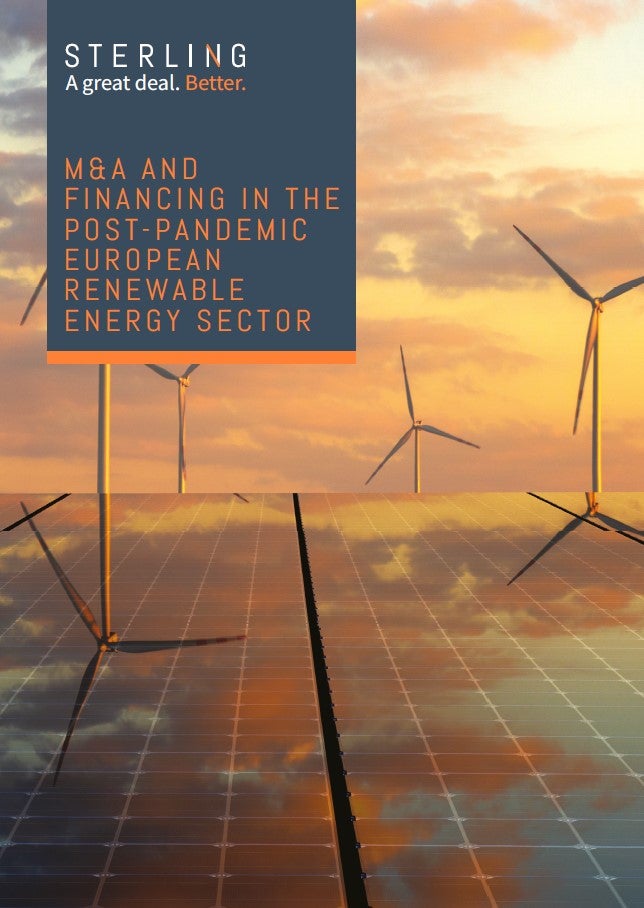
After the frenzied deal activity of 2021 – the highest on record – the mergers and acquisitions (M&A) market got off to a healthy start in January 2022, before tanking for the remainder of the year when a combination of Russia’s invasion of Ukraine, a cost-of-living crisis from sharply higher inflation, and rising interest rates precipitated a broad-based and sharper-than-expected global economic slowdown, catching dealmakers by surprise. It remains to be seen how long this slowdown persists into 2023, or beyond, or if dealmaking animal spirits will begin to reassert themselves.
“It’s probably fair to say that an M&A correction in 2022 was inevitable,” says Philip Whitchelo, chief strategy and marketing officer at Sterling Technology, a specialist provider of deal-supporting technology and services. “Comparing 2022 with 2021 is a little unfair though, because worldwide deal volumes in 2021 shot up by 30% compared to 2020. A better comparison for 2022 is probably 2020, which was obviously impacted by Covid: the number of worldwide M&A deals announced in 2022 was still almost 14% higher than in 2020, although 15% lower than in 2021.”
It was the resumption of economic activity post-Covid that drove sharply higher M&A volumes in 2021. “Lockdowns had started to be eased around the world or removed completely,” says Whitchelo. “Central banks hadn’t started tightening interest rates, which were still very low. There was a general feeling that this was a time to do deals, a time to get back in there.”
Impacts across Europe
The past 12 months have, of course, produced a markedly different landscape. The war in Ukraine, high inflation and rising interest rates are having an impact not just in Europe but across the world. Does this mean that the era of cheap money is over, particularly for debt-financed acquisitions? “That era started to not necessarily come to an end,” says Whitchelo, “but it certainly made capital more expensive, and that’s had a depressing effect on the market.”
Naturally, within that overall decline there were variations in activity levels, with some sectors performing better than others – even better than average.
“One sector where we still see relatively high levels of activity is energy & power,” says Whitchelo, citing renewable energy transactions in particular.
“The reason is that there is this green energy transition happening now pretty much everywhere around the world – almost every country has accepted that we need to make this transition to green or renewable energy. And this transition is being driven by investments in renewable energy sources such as wind and solar farms, and other forms of renewable energy such as clean hydrogen and battery storage.
“So, there was a lot of activity [in 2022] because companies are realigning their portfolios to basically make that transition happen. You’ve got the renewable energy producers themselves; you’ve got infrastructure and private equity funds, [all of] which are buying and selling assets.
“There are projects like Dogger Bank, for example, in the North Sea, which is going to be the world’s largest offshore wind farms, where Sterling Technology’s virtual data room (VDR) platform facilitated the due diligence process for the financing of this project.
“We see activity in renewables being driven by the need to make that transition. Some of it is going to be an economic transition, because the price of fossil fuel-driven energy has obviously increased massively, particularly as a result of the war in Ukraine. That means that the price of renewable energy has become relatively more attractive.
“And some of it is regulatory, because governments are obviously putting the sector under pressure to make that transition.”
Viable technologies for the energy sector
As technologies evolve and new ones emerge, investors will seek to identify the most viable options.
“Some of the challenges are to understand which are the technologies that are going to be the winners in the future, which ones look like they’re going to be sustainable, and going to be financeable,” says Whitchelo. “There are obviously technologies out there, such as solar and wind, which are now becoming relatively mature. And other technologies such as hydrogen, even things like fusion, which are relatively immature. So, companies are having to decide where to place [their] bets.”
There are more generic challenges too, in terms of financing.
“It was relatively easy to finance deals in the last couple of years because of the interest-rate environment. That’s becoming harder now, because the interest rate cycle has turned. Companies are having to think more carefully about how to finance transactions, and what the returns are going to be from M&A activity in a rising interest rate cycle. Are return expectations going to have to come down? Because effectively the cost of capital has started to increase.”
Sterling Technology’s area of expertise is its virtual data room platform – a secure, online repository and set of tools that allow its customers to safely, easily and quickly share confidential information and collaborate with investors, advisors and partners during transactions. These could be mergers and acquisitions but also company or asset sales, debt and equity capital raisings, carve-outs, bankruptcies, restructurings, intellectual property licensing – “any type of transaction where you need to share confidential information with third parties,” says Whitchelo. It’s usually part of the due diligence process, but “you can use a Sterling Technology virtual data room during many stages of the deal, from preparation through to closing, and also for ongoing portfolio asset management and deal readiness.”
While physical data rooms are still used for deals around the world, they can be more time-consuming to access by foreign and domestic buyers, says Whitchelo. A VDR has advantages, he says, not just over physical data rooms but also email and consumer-grade file-sharing platforms.
Compressing the timeline; aiding deal productivity
“One is, with a virtual data room, you can globalise your deal much more easily, you can attract foreign and domestic buyers much more easily, which can give you more competition for your deal, and hopefully a better price.
“Secondly, you can allow your buyers to complete the due diligence process much more quickly, because everybody can work at the same time, no matter where they are – there are no geographic constraints.
“It’s all about compressing the deal timeline. Our data rooms have productivity tools that help to speed up the deal. You can also much more easily and quickly update or add new information into the virtual data room when it becomes available, and that can be immediately made available to potential buyers.
“Tools such as advanced Q&A mean that buyers can ask questions which can automatically be sent to the right subject matter experts in your deal team, moderated or approved by other experts, and the answers sent back to those buyers. You can even publish the answers if they’re relevant to all bidders. They won’t see who asked the question; we can publish an answer to a generic question that keeps getting asked.”
Privacy is a key concern, and something the VDR is designed to ensure.
“You can use very granular information rights management to control who has access to your information. You can prevent buyers from saving a copy of the information, so you can allow them access [only] for a certain period of time. And if they’ve dropped out of the process, you can withdraw their access, whereas with email or free file-sharing platforms they’re very unsecure ways of sharing confidential information. Once you send an email to somebody, you can never “unshare” it. And you can’t stop unsuccessful buyers (who may also be your competitors) from keeping or using your information,” adds Whitchelo.
Sterling Technology’s platform also has tools such as built-in AI-powered redaction – that means its customers can easily redact information in the VDR before it is shared – for example, very sensitive commercial information such as pricing, or personal employee information – maintaining compliance with data privacy regulations.
Alongside security and privacy, VDRs offer sellers increased visibility of the deal process, which can help to inform their negotiating strategy.
“You can see which documents buyers are looking at and for how long, what search terms they’re using when they are conducting due diligence in the VDR. What are the different buyers doing? How much time is one buyer spending versus another buyer? That can help you to understand what they’re potentially concerned about or interested in so you can get business intelligence into their activity in the VDR.
“Also, you get a full record of the entire deal process in the VDR: what documents have been disclosed, which of those have been opened and looked at, how much time have they been spending on those documents, what questions have been asked, what the answers were – that’s all documented. So that gives you protection in case of any post-deal legal disputes. You’ve got a full audit trail of everything that’s happened during the due diligence process.”
Sterling Technology’s customers are typically M&A targets or sellers of assets, such as corporates, private equity and real estate firms, and their financial and legal advisors, but of course the VDR is used by buyers too; in fact, more frequently, seeing as there is usually one entity on the sell-side, and multiple entities on the buy-side. “There’s lots of functionality on both sides of the deal.”
Customers appreciate the advanced functionality, which includes built-in viewers for computer-aided design (CAD) and Microsoft Excel® files, and automatic, real-time translation of VDR content between 121 different language pairs – helping to facilitate deal globalisation.
But beyond the technology, Sterling Technology offers comprehensive professional services support as well.
“Every VDR we sell comes with 24/7/365 project support from our experienced project managers who have worked on thousands of deals. We’re there to support the entire deal process from start to finish. Customers appreciate the overall value proposition that we provide – not just a technology platform, but that whole wraparound service that we provide to ensure customer success on every transaction.”
Looking to the future, does Whitchelo foresee a pick-up in M&A activity? “Obviously, it’s always hard to predict what’s going to happen, but at the moment dealmakers are probably still nervous,” Whitchelo remarks. “Pipelines are not particularly active, but if inflation starts to come down in the first half of 2023, and if we can avoid a prolonged global recession, then it’s probably fair to say that M&A activity will pick up again this year. But it’s a bit early to say when that’s going to happen,” he says.
To learn more, download our new report “M&A and financing in the post-pandemic European renewable energy sector,” published in association with Sterling Technology – the leading virtual data room for renewable energy dealmaking.



